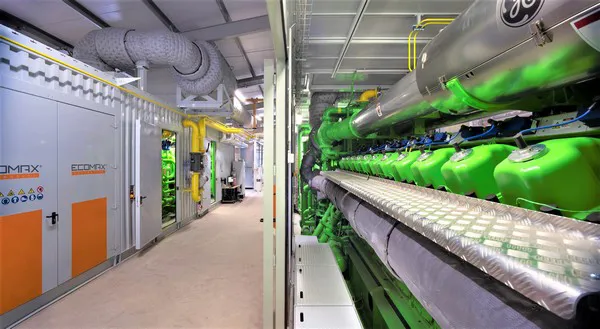Globally, the greenhouse sector continues to go through exponential growth. The location of new greenhouse facilities is driven by several factors that include proximity to market, availability of suitable development land, proximity to distribution networks, availability of natural gas, availability of electricity, etc.
To satisfy the increasing demand for locally produced vegetables and year-round production, more and more greenhouses are investing in grow lights which will help increase production and deliver produce throughout the winter months.
The installation of grow lights significantly increases the power demand of a greenhouse and it is not uncommon that at the perfect location for a new greenhouse the local electricity grid cannot deliver the power required.
Natural gas
The solution seems straightforward: If the grid cannot supply the power needed, but there is sufficient natural gas available, investing in an on-site cogeneration plant can provide the power required. What is often overlooked however is the proper integration of a cogeneration plant in the greenhouse. There are several important considerations when deciding the size, configuration, and integration of a CHP plant in a greenhouse facility.

An ECOMAX CHP plant installed at P3P Partners’ site in Selby (UK). Picture courtesy of P3P Partners LLP.
First, it needs to be determined what is the minimum power available from the grid and what is the minimum power demand at the greenhouse. This will determine the smallest size generator that needs to be included in the cogeneration plant. Next, it should be established what the peak demand of the facility is, as this will determine the total power required and the optimum sizing of individual CHP units.
Generally, between heat produced by the grow lights and heat recovered from the CHP plant, there is more heat than can be accommodated by the greenhouse. It often will be good practice to combine a lit greenhouse with a section that does not have lights to maximize the overall energy efficiency of the installation. Equally important is ensuring that the CO2 recovery from engine exhaust systems is matched with the actual greenhouse demand.
Another important design topic is to make sure that the CHP plant is properly integrated with the greenhouse climate control system. At the heart of the greenhouse is always a climate control system that ensures that optimum growing conditions are created to maximize greenhouse production.
Lighting control
To properly integrate a CHP plant that operates independent from the grid, dedicated master controls and a lighting control computer are required to ensure that at all times the generator capacity is matched to the load that needs to be powered.
Absolutely critical for optimizing operation is that the climate control system determines when and which lights need to be on, but that the grow light control computer controls the breakers for the lights. This happens in close coordination with the CHP plant master controls.
This ensures that new loads being added to the system are always within the capability of the CHP plant. By verifying that engines are running before loads are connected and controlling load steps within the transient capability of the CHP plant, the entire lighting load requested by the climate control computer can be connected without major voltage and frequency fluctuations.
Where the grow light computer and master controls are indispensable, is in the event of an unscheduled shutdown of one of the CHP units. Without instantaneous load control, the loss of one CHP unit will result in the remaining engines being overloaded and the entire plant will go down. A dedicated lighting control computer will respond fast enough to disconnect enough load so the remaining CHP units can continue to run and power load that is within their capabilities. Should an additional CHP unit or backup generator be available, the control system can automatically start this unit up and once power is available, reconnect the lights that were disconnected.
This ability to instantaneously manage the load and available generation capacity becomes even more critical for sites that in addition to grow lights have significant additional loads such as pumps, chillers, and ventilation systems.
For more information: Gruppo AB
Gruppo AB
Via Caduti del Lavoro, 13
25034 Orzinuovi (BS)
T. +39 030 99 42 411
info@gruppoab.com
www.gruppoab.it
